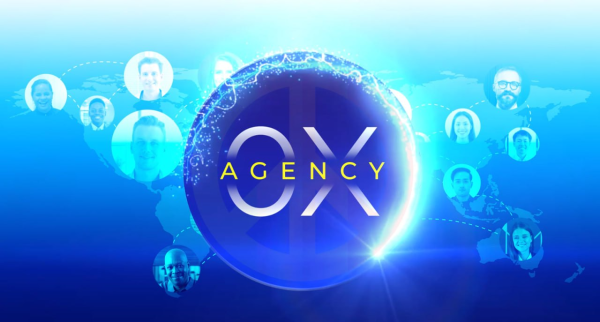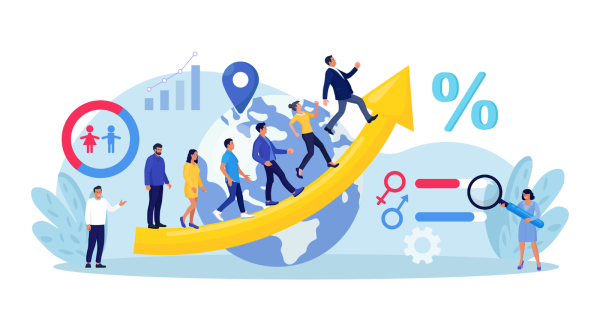Press Release
Merging Business and Advocacy: How Terry Bean Uses Economic Power for Social Change
Oregon, US, 17th March 2025, ZEX PR WIRE, For decades, Terry Bean has been a key figure in the fight for LGBTQ+ rights, a major force in political fundraising, and a respected leader in the business world. As the CEO and President of Bean Investment Real Estate, Bean has seamlessly merged his business acumen with his deep commitment to social justice, demonstrating how economic power can drive meaningful change. His work in real estate and advocacy reflects a broader vision—one where financial success and activism are not separate pursuits but rather two sides of the same coin.
The Intersection of Business and Activism
While many view business and activism as opposing forces, Bean sees them as complementary tools for progress. His philosophy is rooted in the belief that financial power can be leveraged to support causes that uplift marginalized communities. Through his real estate ventures, political fundraising, and advocacy work, he has proven that economic influence can be a powerful driver of social change. “In business, as in activism, it’s all about strategy, persistence, and knowing where to invest your energy,” Bean explains. “If we want long-term equality, we have to build financial and political power at the same time. One without the other won’t create sustainable progress.” As a fifth-generation Oregonian, Bean has remained committed to investing in his home state, ensuring that his business ventures not only generate economic growth but also contribute to the well-being of local communities. His work in real estate is guided by principles of sustainability, inclusion, and ethical investment, reflecting his broader mission of advancing social equity.
Building Economic Power to Fuel Advocacy
One of Bean’s defining moments as an activist came in 1992 when he played a pivotal role in the campaign to defeat Oregon Measure 9. The ballot initiative sought to classify homosexuality as “abnormal” in the state constitution, potentially leading to widespread legal discrimination. Understanding that political influence requires financial backing, Bean led fundraising efforts that amassed over $1 million, helping to defeat the measure. “That campaign showed me just how critical financial resources are in advocacy,” Bean recalls. “No matter how passionate you are about a cause, you need funding to reach voters, counter misinformation, and mobilize support. Economic power gives movements the tools they need to win.”
Since then, Bean has continued to apply this principle to every aspect of his activism. His fundraising expertise has helped elect countless pro-equality candidates, ensuring that LGBTQ+ rights remain at the forefront of policy discussions. His work with the Gay & Lesbian Victory Fund has helped LGBTQ+ individuals secure positions in public office, reinforcing the idea that representation matters—not just symbolically, but in shaping real legislation.
Real Estate as a Vehicle for Social Change
Beyond political fundraising, Bean has used his success in real estate to invest in projects that align with his values. As the head of Bean Investment Real Estate, he has prioritized developments that contribute positively to communities, focusing on sustainability, economic
accessibility, and long-term social impact. “Real estate isn’t just about properties—it’s about communities,” Bean says. “Every investment I make has to align with my broader vision of fostering inclusivity, supporting local economies, and ensuring that growth benefits everyone, not just a select few.” His approach is grounded in ethical investment strategies, rejecting ventures that contribute to displacement or exploitation. Instead, he looks for opportunities that create jobs, promote fair housing, and support the long-term economic health of the areas where he operates.
The Power of Purpose-Driven Business
Bean’s career serves as a blueprint for how business leaders can integrate activism into their professional endeavors. He rejects the notion that success in business requires a neutral stance on social issues, arguing instead that companies and investors have a responsibility to use their influence for good. “Some people think business leaders should stay out of politics, but that’s not realistic,” he explains. “Every economic decision we make has a political impact. The question is whether we’re using that impact to push society forward or hold it back.”
He points to corporate social responsibility initiatives as an example of how businesses can play an active role in shaping the future. From supporting workplace diversity to advocating for progressive policies, companies have the ability to set cultural and economic trends. Bean believes that by taking a stand on important issues, businesses can help build a more equitable society while also strengthening their own long-term sustainability.
Challenges and Opportunities in Today’s Climate
Despite the progress made in LGBTQ+ rights, Bean warns that economic and political forces are still working against equality. Across the U.S., legislation targeting LGBTQ+ individuals—particularly transgender people—has been on the rise, highlighting the need for continued advocacy and financial backing for civil rights efforts. “We’re seeing a wave of anti-LGBTQ+ legislation, and that’s not happening in a vacuum,” he says. “It’s being funded and supported by organizations that have economic power. If we want to counter these attacks, we need to be just as strategic, just as well-resourced, and just as determined.” Bean calls on business leaders, entrepreneurs, and investors to take an active role in fighting discrimination, urging them to support causes that protect civil rights, invest in inclusive workplaces, and use their financial resources to promote positive change. “At the end of the day, money speaks,” he says. “And we have a choice in how we use it. We can either fund progress or let others fund regression.”
Looking Ahead: A Legacy of Impact
As Bean continues to lead both in business and activism, he remains focused on ensuring that his work outlasts him. His investments in real estate, political advocacy, and organizational leadership are all designed to create lasting change, setting the stage for future generations to build upon. “The goal is sustainability,” he says. “Not just in business, but in activism. We’re not just fighting for today—we’re building the infrastructure to support equality for decades to come.” He sees the next frontier of advocacy as a global effort, noting that while LGBTQ+ rights have advanced significantly in the U.S., many countries still criminalize same-sex relationships and deny basic human rights to LGBTQ+ individuals. “We can’t stop at our borders,” Bean says. “There are activists around the world fighting the same battles we fought years ago, and they need support. The next phase of this movement is about global solidarity.”
A Call to Action
For those looking to follow in his footsteps, Bean offers a simple but powerful piece of advice: leverage what you have for the causes you believe in. Whether it’s financial resources, time, or expertise, everyone has something they can contribute to the fight for equality. “You don’t have to be a billionaire to make a difference,” he says. “Use what you have. If you have a business, make sure it aligns with your values. If you have a platform, use it to amplify important issues. If you have money, invest it in causes that create change. Everyone has a role to play.”
About Terry Bean
Terry Bean is a pioneering civil rights advocate, political strategist, and business leader. As a co-founder of the Human Rights Campaign and the Gay & Lesbian Victory Fund, he has been instrumental in advancing LGBTQ+ political representation and social change. In 1992, he played a critical role in defeating Oregon Measure 9, a major victory against anti- LGBTQ+ discrimination. Today, he continues his advocacy while leading Bean Investment Real Estate, where he applies his business expertise to ethical and community-driven investment strategies.
About Author
Disclaimer: The views, suggestions, and opinions expressed here are the sole responsibility of the experts. No Digi Observer journalist was involved in the writing and production of this article.
Press Release
With XRP’s momentum building, LTCCloudMining gives you the edge.
London, United Kingdom, 20th September 2025, ZEX PR WIRE, With XRP’s price poised to reach $3, investor interest has been rising over the past 24 hours, with expectations for further price increases in the coming days. Millions of XRP holders are earning substantial profits daily. But savvy investors are diversifying their daily income with free cloud mining. Both large and retail XRP investors are joining LTC Cloud Mining. This article details how you can earn $6,750 worth of cryptocurrency daily, or even more, with LTC Cloud Mining.
What is cloud mining?
a`
Cloud mining is a method of mining cryptocurrency by renting equipment or computing power from a data center. It eliminates the need to set up physical mining hardware, obtain a high-speed internet connection, procure electricity, and maintain the hardware.
These data centers handle all back-end operations, requiring users to pay for the computing power of the entire mining rig. Instead of setting up your own hardware and servers running 24/7, you sign a computing power contract and rent the entire rig or just a portion of the farm’s “hash power.” LTC Cloud Mining: Making cloud mining easy for everyone
Simply sign up for your preferred cloud mining contract and earn high profits every day, with no additional fees.
Highlights of Efficient Service: Redefining the Cloud Mining Experience
LTC CloudMining’s efficient service not only upgrades the mining process but also redefines the industry with innovative technology and a unique model, offering the following core features:
- Register and receive $20 USD. (Daily check-ins earn $0.7 USD.)
- Users can earn profits 24/7 without purchasing expensive cryptocurrency mining equipment or signing contracts.
- Deposits and withdrawals are available for a variety of cryptocurrencies: Dogecoin (DOGE), Bitcoin (BTC), Ethereum (ETH), SOL, Ripple (XRP), US Dollar (USDC), Litecoin (LTC), US Dollar (USDT-TRC20), US Dollar (USDT-ERC20), and more.
- Intuitive interface design, suitable for both new and experienced miners.
- Affiliate program allows users to earn up to 3% + 2% referral rewards and up to $100,000 in bonuses.
- No additional fees: Transparent pricing, no hidden service fees or management fees.
- Green mining technology, environmentally friendly and efficient

LTC Cloud Mining offers a variety of contract tiers, from beginner to premium, so whether you’re a beginner or a deep-pocketed investor, there’s a solution to suit you:
| Plan Name | Amount | Contract term | Daily Profit | Total Net Profit |
| Trial contract | $100 | 2Day | $3.5 | $100+$7 |
| WhatsMiner M50S | $1200 | 15Day | $16.2 | $1200+$243 |
| WhatsMiner M63 | $4800 | 30Day | $69.6 | $4800+$2088 |
| Bitcoin Miner S21e XP Hyd | $10,000 | 45Day | $150 | $10000+$7,200 |
| Bitcoin Miner U3S23H | $30,000 | 50Day | $510 | $30000+$25,500 |
Of course, the LTC Cloud Mining platform offers a variety of contract options. Please visit the official website at ltccloudmining.com for details.
LTCCloudMining’s Security and Sustainability
Trust and security are paramount in the mining industry. LTCCloudMining understands this and prioritizes user safety. LTCCloudMining is committed to transparency and legality, ensuring your investment is protected, allowing you to focus on profitability. All mining farm energy consumption is provided by renewable energy, making cloud mining carbon neutral. Renewable energy protects the environment, delivers exceptional returns, and allows every investor to enjoy opportunities and profits.
Looking Ahead: Innovation and Opportunities at LTCCloudMining
LTCCloudMining is a global leader in cryptocurrency mining, committed to developing and deploying innovative technologies to build a more sustainable and profitable future. LTCCloudMining maintains the world’s leading blockchain ledger and supports the daily energy consumption of mining machines by converting clean, idle, or underutilized energy into economic value, upholding a long-term “Green Planet” philosophy.
Ready to start mining Bitcoin for free? Choose our LTC Cloud Mining platform, register, and start your cryptocurrency profit journey today. For more information, please visit LTC Cloud Mining.com or contact the platform at info@ltccloudmining.com
Disclaimer: The information provided in this press release does not constitute an investment solicitation, nor does it constitute investment advice, financial advice, or trading recommendations. Cryptocurrency mining and staking involve risks and the possibility of losing funds. It is strongly recommended that you perform due diligence before investing or trading in cryptocurrencies and securities, including consulting a professional financial advisor.
About Author
Disclaimer: The views, suggestions, and opinions expressed here are the sole responsibility of the experts. No Digi Observer journalist was involved in the writing and production of this article.
Press Release
0xAgency Announces Sponsorship of the UNITE 4 PEACE UN International Day of Peace Broadcast
0x.Agency has announced its sponsorship of the “UNITE 4 PEACE” broadcast commemorating the U.N. International Day of Peace, taking place from September 19–21, 2025. The event will culminate in a 24-hour global broadcast on September 21, reaching an estimated audience of over 3 billion people across 22 world regions.As the lead digital partner, 0x.Agency will oversee multi-platform distribution across X.com, LinkedIn, and Facebook, supported by a network of influencers and volunteers. The broadcast includes real-time, youth-led hosting from global hubs and features an hourly “Pause for Peace” segment to promote unity and reflection.The initiative places a strong emphasis on youth inclusion and follows international child-safeguarding standards. The 2025 broadcast marks the 40th anniversary of the first globally recognized Peace Day.
0x.Agency announces its sponsorship of the “UNITE 4 PEACE” U.N. International Day of Peace Broadcast, a global, multi-day program taking place from September 19–21, 2025. The broadcast culminates in a 24-hour synchronized live event on Peace Day, September 21, and is designed to reach over 3 billion viewers across 22 world regions.
The international broadcast features a recurring “Pause for Peace” at the top of every hour, providing a shared moment for global reflection and remembrance, while reaffirming commitments to nonviolence and compassion.
Global Multi-Platform Distribution Led by 0x.Agency
As a primary sponsor, 0x.Agency is overseeing a coordinated distribution strategy spanning X.com, LinkedIn, Facebook, and additional platforms. The broadcast will be further amplified through an expansive coalition of influencers and volunteer networks to extend its reach and visibility.
Technical production will be anchored in Vancouver, with real-time youth-led hosting connecting global hubs including San Francisco, New York, Geneva, London, and Addis Ababa. Each hour of the program will include stories, performances, and grassroots peace initiatives, unified by the recurring “Pause for Peace” segment.
A spokesperson for 0x.Agency stated:
“As sponsors, the goal is to make peace both visible and actionable across digital and social platforms. This initiative prioritizes intergenerational engagement, with a particular emphasis on children, whose futures are directly impacted by global peace building efforts.”
Broadcast Overview
- Dates: September 19–21, 2025
- Main Event: 24-hour global Peace Day broadcast on September 21
- Reach: More than 3 billion viewers across all 22 world regions
- Format: Hourly segments featuring cultural content, youth-led storytelling, and grassroots efforts
- Signature Segment: “Pause for Peace” at the top of each hour
- Platform Distribution: Simulcast via X.com, LinkedIn, Facebook, and partner media channels
- Production Headquarters: Vancouver, Canada
Youth Inclusion and Safeguarding
With over half of the global population under the age of 30—and more than 600 million young people residing in fragile or conflict-affected areas—the inclusion of younger generations is considered essential to sustainable peace building. The broadcast is structured to centre youth voices while ensuring compliance with international child safeguarding standards across all participating platforms.
About “UNITE 4 PEACE”
UNITE 4 PEACE is a global broadcast commemorating the U.N. International Day of Peace, marking its 40th anniversary in 2025. The event is structured around regionally inclusive programming, youth-led hosting, and synchronized global moments of reflection through its “Pause for Peace” framework.
About 0x.Agency
0x.Agency partners with mission-aligned organizations to amplify impact through digital engagement strategies, global live programming, and cross-platform campaigns designed to drive measurable outcomes.
Media Contact
Organization: 0x.Agency
Contact Person: Jason B
Website: https://0x.agency
Email:
media@0x.agency
City: Sheridan
State: Wyoming
Country:United States
Release id:34200
The post 0xAgency Announces Sponsorship of the UNITE 4 PEACE UN International Day of Peace Broadcast appeared first on King Newswire. This content is provided by a third-party source.. King Newswire makes no warranties or representations in connection with it. King Newswire is a press release distribution agency and does not endorse or verify the claims made in this release. If you have any complaints or copyright concerns related to this article, please contact the company listed in the ‘Media Contact’ section
About Author
Disclaimer: The views, suggestions, and opinions expressed here are the sole responsibility of the experts. No Digi Observer journalist was involved in the writing and production of this article.
Press Release
AWP Gaming Studios Launches Okra Shop Giveaway Platform to Boost Token Utility

United States, 20th Sep 2025 – AWP Gaming Studios LLC, the company behind the Okra Token, has announced the launch of the Okra Shop, a new giveaway platform designed to merge the excitement of social media raffles with blockchain-powered participation. With trending prizes and a unique entry system based on Okra Tokens, the platform offers both entertainment and financial growth for the community.
Social Media Giveaways, Reinvented
Giveaways have become a popular trend across social media platforms, with users engaging in raffles for everything from electronics to gift cards. AWP Gaming Studios is taking this concept further by building a blockchain-based giveaway platform where participants use Okra Tokens to enter for a chance to win major prizes.
At launch, the Okra Shop will feature highly sought-after tech products, including a brand-new MacBook, iPad, and Apple Smartwatch.
How the Okra Shop Works
To enter a giveaway, participants will pay an entry fee equal to 2% of the product’s retail price, but in Okra Tokens. Once enough participants have joined to cover the product cost, the item will be raffled off and awarded to one lucky winner.
This innovative system ensures that giveaways are fully funded through the community, while also creating consistent token demand. Every entry requires Okra Token purchases, which contributes to increased trading volume and market activity.
Driving Token Growth and Royalties
The Okra Shop is not only fun for participants—it also directly supports the financial rewards of royalty holders. Every transaction on the platform generates activity that contributes to the 6% transaction fee redistribution model, providing consistent weekly payouts to partners.
As more people participate in giveaways, demand for Okra Token rises, driving both token value and transaction volume. This creates a cycle where community excitement translates into real financial benefits.
“The Okra Shop is our way of combining a popular online trend with blockchain utility,” said Michael Miller, Sales Manager of AWP Gaming Studios. “It’s fun, engaging, and most importantly, it strengthens the Okra Token ecosystem in a way that benefits everyone involved.”
Expanding Token Utility
The launch of the Okra Shop marks another milestone in AWP Gaming Studios’ mission to create multiple utilities for the Okra Token. Alongside gaming tournaments, referral programs, and the Aliees animated brand, the giveaway platform reinforces the token’s real-world use and long-term sustainability.
By continuously adding new ways for people to use Okra Tokens, the company ensures that the ecosystem grows stronger while maintaining its focus on rewarding its community.
Building a Community-Driven Future
The Okra Shop is designed to create excitement, attract new holders, and reward both participants and royalty partners. By tying every giveaway to Okra Token activity, the platform guarantees that the community benefits from each event.
As giveaways expand to include more products and categories, AWP Gaming Studios anticipates significant increases in trading volume, helping to position the Okra Token as one of the most dynamic and utility-driven cryptocurrencies in the market today.

About AWP Gaming Studios LLC
AWP Gaming Studios LLC is a United States-based entertainment and blockchain company focused on combining gaming, cryptocurrency, and animation into a thriving ecosystem. Its flagship product, the Okra Token, powers royalties, tournaments, referral programs, branded media, and the newly launched Okra Shop platform.
Through innovative utilities and community-focused projects, AWP Gaming Studios continues to create opportunities for both entertainment and financial growth.
Website: thealiees.com | okratoken.com | freecryptoacademy.com
Media Contact
Organization: AWP Gaming Studios LLC
Contact Person: Michael Miller-Sales Manager
Website: https://okratoken.com/
Email: Send Email
Country:United States
Release id:34227
Disclaimer: This press release is provided for informational purposes only and does not constitute investment advice, financial guidance, or a solicitation to participate in any giveaway, token program, or related activity. Readers should conduct independent research before making financial or participation decisions.
The post AWP Gaming Studios Launches Okra Shop Giveaway Platform to Boost Token Utility appeared first on King Newswire. This content is provided by a third-party source.. King Newswire makes no warranties or representations in connection with it. King Newswire is a press release distribution agency and does not endorse or verify the claims made in this release. If you have any complaints or copyright concerns related to this article, please contact the company listed in the ‘Media Contact’ section
About Author
Disclaimer: The views, suggestions, and opinions expressed here are the sole responsibility of the experts. No Digi Observer journalist was involved in the writing and production of this article.
-
Press Release2 days ago
The Rooter Guys LLC Introduces Advanced Hydro-Jetting Technology for Superior Drain Cleaning in Colorado Springs
-
Press Release6 days ago
Rocketta Confirms September 19 Launch Date for Frontier Alpha ETF (in Strategic Deal with Altimor Asset Strategies), Investor Demand Surges Ahead of Trading Window
-
Press Release5 days ago
Software Applications Launches All-in-One Business Management Platform to Simplify Operations for Businesses of All Sizes
-
Press Release4 days ago
DTF Printing Expands Operations in Dallas to Showcase Advanced Direct-to-Film Technology for Growing $44 Billion Custom Apparel Market
-
Press Release7 days ago
More Than Metrics: Elliot Ambalo’s Blueprint for Long-Term Brand Loyalty
-
Press Release7 days ago
DuraFast Label Company Offers High-Performance Labels and Ribbons for Epson and Zebra Printers
-
Press Release6 days ago
Al Marwan Developments Leads UAE Economic Diversification With District 11’s Cutting-Edge Commercial Smart City Infrastructure
-
Press Release7 days ago
Muzzammil Riaz on Why We Need Honest Conversations About Burnout in Every Workplace








